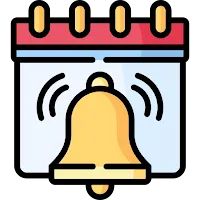Semicolons
Introduction
Have you ever found yourself stuck between a full stop and a comma, unsure of how to connect two closely related thoughts? If so, you’re not alone. The semicolon is one of the most misunderstood and underused punctuation marks in the English language. Yet, when used correctly, it can elevate your writing, giving it flow and precision that a comma or period just can’t achieve.
Whether you’re a student trying to polish your essays, a blogger aiming to add sophistication to your posts, or a teacher, editor, or professional looking to communicate with more clarity, understanding the semicolon is a game-changer. In this post, we’ll demystify its usage and show you how to wield it with confidence.
Let’s unlock the potential of the semicolon and take your writing to the next level—no matter where you are on your writing journey.
When to use semicolons?
1.Use a semicolon between independent clauses that are closely related in thought and are not joined by a coordinating conjunction (and, but, for, nor, or, so, or yet).
EXAMPLE
- The wooden bridge groaned; a heavy truck was driving across. [The clause The wooden bridge groaned is connected to the related clause a heavy truck was driving across by a semicolon.]
An independent clause has a subject and a verb and can stand alone as a sentence.
Two independent clauses with similar ideas may be joined with a semicolon.
Use a semicolon only if the ideas are closely related.
Two independent clauses with similar ideas may be joined with a semicolon.
Use a semicolon only if the ideas are closely related.
EXAMPLE
- The Sahara was once wet and green; climate changes have made it a vast desert. [The two independent clauses are closely related. The clauses are not joined by a coordinating conjunction, so a semicolon separates them.]
2-Use a semicolon between independent clauses joined by a conjunctive adverb or a transitional expression.
A conjunctive adverb or a transitional expression tells how two clauses are related in meaning.
Always set off conjunctive adverbs and transitional expressions with commas because conjunctive adverbs and transitional expressions are extra information in the sentence.
You can place a conjunctive adverb or transitional expression right after the semicolon or put it within the second clause.
Always set off conjunctive adverbs and transitional expressions with commas because conjunctive adverbs and transitional expressions are extra information in the sentence.
You can place a conjunctive adverb or transitional expression right after the semicolon or put it within the second clause.
EXAMPLES
- Camels have very thick skin; otherwise, blowing desert sand would hurt them. [The clause Camels have very thick skin is connected to the related clause blowing desert sand would hurt them by a semicolon and the conjunctive adverb otherwise.]
- Jan looked at the radios; she did not, however, buy one. [The clause Jan looked at the radios is connected to the related clause she did not buy one by a semicolon and the conjunctive adverb however. Conjunctive adverbs do not always come at the beginning of the second independent clause.]
<->
3-You may need to use a semicolon (rather than a comma) before a coordinating conjunction to join independent clauses that contain commas.
Think of a semicolon as “stronger” than a comma. A comma tells readers to pause, but a semicolon helps readers make a bigger pause when too many commas make a sentence long and confusing.
EXAMPLE
- The toolbox held nails, a hammer, screws, and a screwdriver; but a wrench, a ruler, and a saw were missing. [Both independent clauses contain several commas. A semicolon is needed with the coordinating conjunction but to join the clauses without confusion.]
REMINDER
4-Use a semicolon between items in a series if the items contain commas.
EXAMPLE
- The dance team included Lila Keys, the captain; Sandra Davis, the co-captain; and Nina Nichols, the lieutenant. [Each item in this series contains commas. A semicolon between items keeps the items separate and makes the list of items easier to read.]
Semicolons Quiz
Are these sentences correct or incorrect? Select the appropriate answer.


